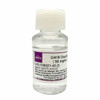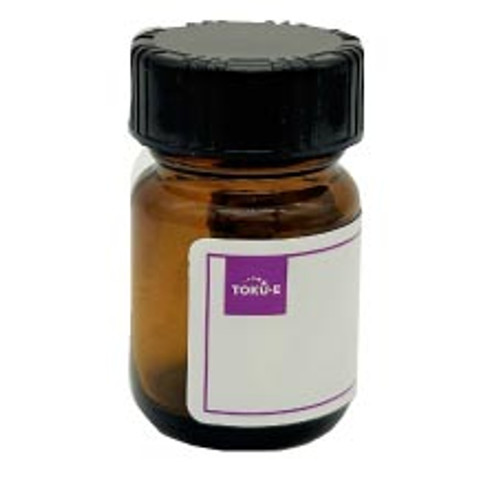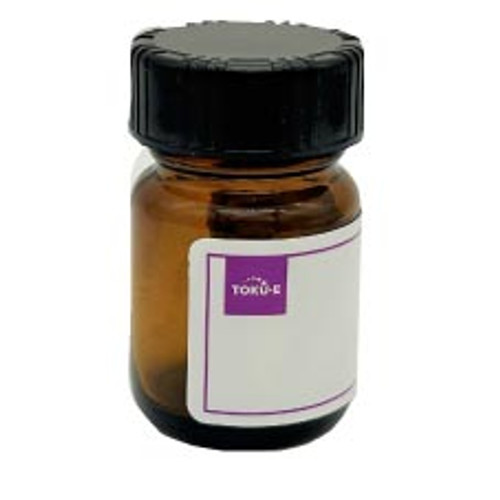G418 Disulfate ReadyMade™ Solution (50 mg/ml in water) is a sterile, aqueous solution of G418 Disulfate. G418 Disulfate (syn: Geneticin), an aminoglycoside antibiotic originally isolated from Micromonospora rhodorangea. The product is routinely used for gene selection in cell culture. The aqueous format is safer and allows for streamlined workflows.
We also offer:
For additional ReadyMade™ solutions, click here.
| Mechanism of Action | G418 Disulfate, along with other aminoglycosides, prevent protein synthesis. Resistance to G418 Disulfate is conferred by the neomycin resistance gene (neo) from either Tn5 or Tn601 (903) transposons. Cells successfully transfected with resistance plasmids containing the neo resistance gene can express aminoglycoside 3'-phosphotransferase (APT 3' I or APT 3' II) which covalently modifies G418 to 3-phosphoric G418, which has negligible potency and has low-affinity for prokaryotic and eukaryotic ribosomes. |
| Spectrum | G418 Disulfate is toxic to susceptible prokaryotic and eukaryotic cells including fungi (yeasts and molds), bacteria, mammalian and plant cells. |
| Microbiology Applications | G418 Disulfate can be used as a selection agent for G418 resistant bacteria or fungi after transformation. |
| Eukaryotic Cell Culture Applications | G418 Disulfate is routinely used as a selection agent in cell culture after transfection of eukaryotic cells. Resistant cells express the neo gene which produces aminoglycoside 3'-phosphotransferase (APT 3' I or APT 3' II), a protein that confers resistance to G418 Disulfate and other aminoglycoside antibiotics.
Optimal working concentrations:
The optimal working concentration of G418 sulfate to select for resistant clones depends on the cell line, reagent quality, reagent lot, media, growth conditions, cell density, cell metabolic rate, cell cycle phase, and plasmid quality. A kill curve should be performed to determine the optimal concentration for each experimental system. Use the following guide to determine the concentration to use to generate a kill curve:
A working concentration of 200 mg/L is usually sufficient after resistant mammalian clones are selected and can be used for maintenance until stable resistant clones are selected. The Selectivity Factor is a quantifiable measure of how efficient an antibiotic is during the process of gene selection. TOKU-E scientists tested the selectivity factor of G418 for BHK-21 cells and HeLa cells. Authors found that G418 is an ideal selection antibiotic for transfected BHK-21 cells but not optimal for HeLa cells. The method uses a modified MTT assay, which can be used to numerically determine the antibiotic efficiency (Delrue I et al, 2018). For more information about the Selectivity Factor, click here.
|
| Molecular Formula | C20H40N4O10 · 2H2SO4 |
| Biological Assay | ED50 Resistant: Not less than 2,500µg/mL ED50 Sensitive: Not more than 400µg/mL |
| Elemental Analysis | Carbon: 28.80 - 36.07% Hydrogen: 5.76 - 7.76% Nitrogen: 6.72 - 8.41% Waters of Hydration: 0 to 6 |
| Absorbance | 280nm (1mg/mL): Not more than 0.015 570nm (100mg/mL): Not more than 0.10 |
| Documents | G418_Kill_Curve_Protocol.pdf|Plasmid_DNA_Transfection_Protocol.pdf|Selection_of_Stable_Transfected_Cell_Lines_Protocol.pdf |
| References |
Product References (G418 Disulfate, TOKU-E) Delrue I, Pan Q, Baczmanska AK, Callens BW and Verdoodt LLM (2018) Determination of the selection capacity of antibiotics for gene selection. Biotechnol. J. 13(8):1700747 PMID 29436782 Suasnavas EA (2013) Characterization and potential utility of porcine trophoblast-derived stem-like cells. MS thesis, Utah State University, Logan, UT
Davis, BD (1987) Mechanism of bactericidal action of aminoglycosides. Microbiol. Rev. 51(3):341-50 Lin-Cereghino, J et al (2008) Direct selection of Pichia pastoris expression strains using new G418 resistance vectors. Yeast 25:293-99. Shin, Y (2007) Selection of NptII transgenic sweet potato plants Using G418 and paromomycin. J. Plant Biol. 50(2):206-12 |
| Protocols |
G418 Disulfate Kill Curve Protocol Background:G418 disulfate, also known as G418 sulfate, is routinely used to select for successfully transfected mammalian cells that express the neo resistance gene in addition to the gene of interest. The neo gene encodes amino-glycoside 3’-phosphotransferase; an enzyme which confers resistance to G418 disulfate and neomycin. Before stable transfected cell lines can be selected, the optimal G418 disulfate concentration needs to be determined by performing a kill curve titration. The optimal concentration of G418 disulfate suitable for selection of resistant mammalian clones depends on the cell lines, media, growth conditions, and the quality of G418 disulfate. It is necessary to perform a kill curve for every new cell type and new batch of G418 disulfate. Preparation and storage of G418 disulfate solution:
Plasmid DNA Transfection Protocol
Once the appropriate antibiotic concentration to use for selection of the stable transfected cells has been determined by performing a kill curve, the next step is to generate a stable cell line by transfection of the parental cell line with a plasmid containing the gene of interest and an antibiotic resistance gene. Plasmid DNA Transfection Protocol:
QC Seed 24-wells with insert and determine the transfection efficiency by immunostaining:
Selection of Stable Transfected Cell Lines ProtocolBackground: Once the cells have been successfully transfected, the next step is to seed and select the transfected cell line in a single 96-well plate to select pure colonies by limited dilution as outlined below: Protocol:
QC Seed 24-wells with insert for an immunostaining to determine percentage of cells expressing the gene of interest to be able to identify a 100% pure clone. You can also use Western blotting, flow cytometry or another technique depending on the cell line used. Seed 24-wells with insert and determine the expression level of the gene of interest by immunostaining:
|








